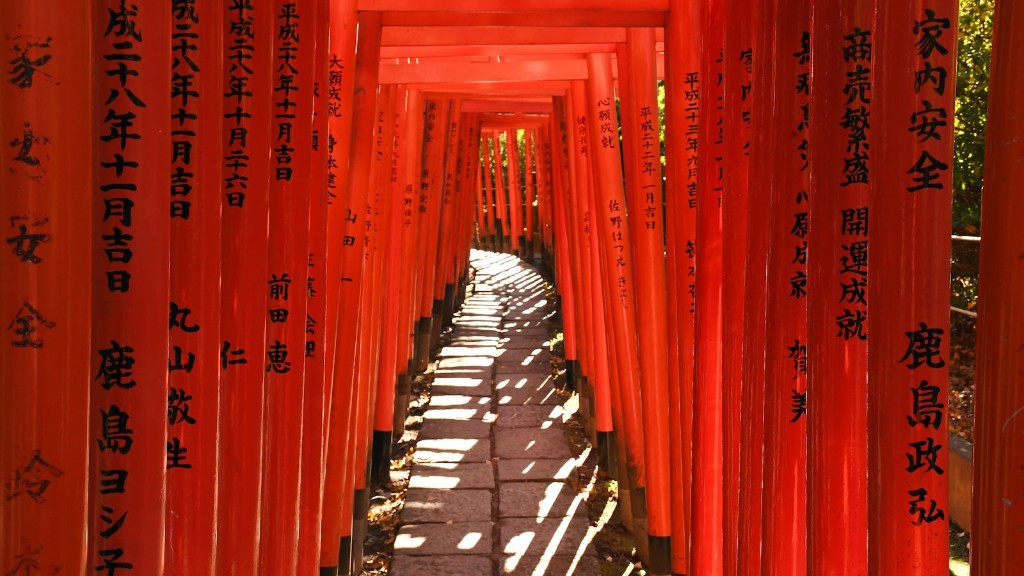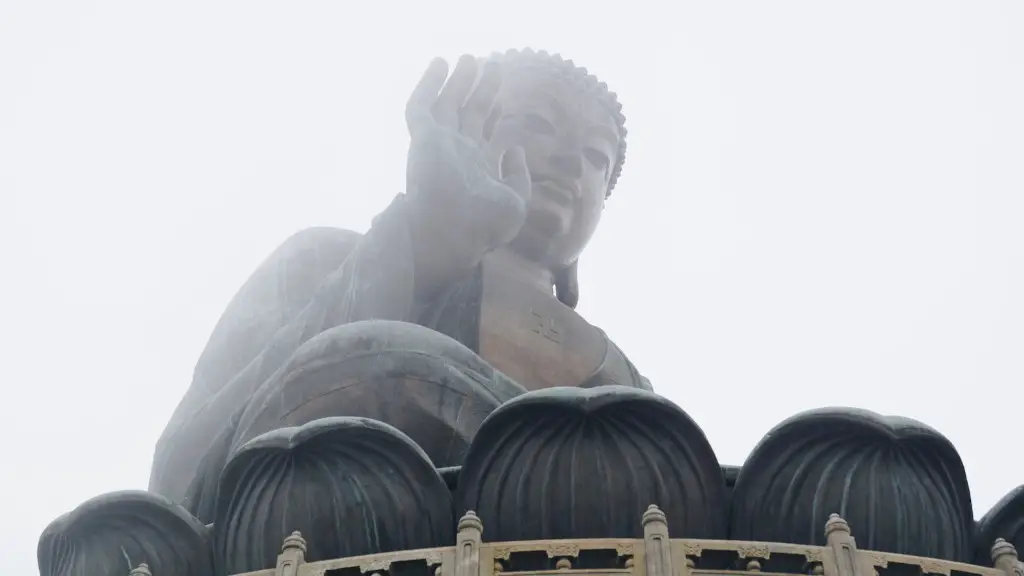If you’re interested in trying out meditation but don’t know where to start, you may want to try Buddhist meditation for beginners. It’s a form of mindfulness meditation that anyone can do, and it can be a great way to focus your mind and find inner peace. Here’s a quick guide to getting started with Buddhist meditation for beginners.
To meditate as a Buddhist beginner, sit in a comfortable position with your spine straight, your eyes closed, and your hands resting in your lap with your palms up. Take a few deep breaths and focus your attention on your breath. Count each breath as you inhale and exhale. Once you reach ten, start over again. If your mind wanders, gently bring your attention back to your breath.
How should a beginner start meditation?
Meditation can be a great way to relax and focus your mind. Here are a few tips on how to get started:
1. Find a quiet place to sit. You want to be somewhere that feels calm and peaceful.
2. Set a time limit. Decide how long you want to meditate for, and then set a timer.
3. Notice your body. Pay attention to how you’re sitting and how your body feels.
4. Feel your breath. Focus on your breath and the sensation of air moving in and out of your lungs.
5. Notice when your mind has wandered. This is bound to happen at some point! When you notice that your mind has wandered, gently bring your attention back to your breath.
6. Be kind to yourself. Don’t be too hard on yourself if your mind wanders. Just gently bring your attention back to your breath.
7. Close with kindness. When your timer goes off, take a few deep breaths and then slowly open your eyes.
Meditation is a simple but powerful tool that can help us to improve our mental and physical well-being. There are many different types of meditation, each with its own unique benefits.
Samatha meditation is a great way to calm the mind and develop deeper concentration. This type of meditation can be helpful for those who find it difficult to focus or who are easily distracted.
Vipassana meditation is a powerful tool for developing self-awareness and insight. This type of meditation can help us to see things more clearly, both in ourselves and in the world around us.
Mettabhavana meditation is a wonderful way to cultivate love and compassion. This type of meditation can help us to connect with others on a deeper level and to feel more empathy and understanding for them.
What to focus on when meditating Buddhism
Mindfulness, emptiness, and not self are at the heart of Buddhist teachings and the meditation experience. The idea of “rightness” is central to the Fourth Noble Truth: the Eightfold Path that leads to the cessation of suffering.
The four points above are keys to helping you find inner peace. If you can learn to clear your mind of emotional turmoil, you will be able to find the truth of “the way things are” for yourself. Once you find this truth, you can learn to love and be compassionate to yourself and others.
How do I know if I’m meditating correctly?
If you find yourself becoming more aware of your surroundings and your own thoughts and feelings, it is likely that you are meditating correctly. This heightened sense of awareness can lead to noticing things that you never have before, or paying more attention to things that you would normally not pay attention to.
There are a few things you can do to help you stay awake while remaining deeply relaxed. First, find a quiet and comfortable place to sit. Second, count every breath you take. Third, focus on a point in front of you. Fourth, keep your eyes open and your body still. Finally, don’t worry if you can’t stay awake the whole time. Just keep trying and you’ll eventually get better at it.
How often should a Buddhist meditate?
You need to be consistent and persistent if you want to improve your mental fitness. Practicing for just fifteen minutes a day will help you build up your mental muscles and make progress. Just like physical exercise, the more you do, the better your results will be. So try to increase your sitting time gradually and see how it affects your thinking and concentration.
Want to learn how to meditate but feel like you don’t have the time or patience? Luckily, there are some simple steps that can help you get started with a meditation practice.
1. Sit upright comfortably. You can sit on the floor, in a chair, or on a cushion. Just make sure that your spine is straight and your body is relaxed.
2. Gently close your eyes.
3. Breathe deeply. Inhale and exhale slowly and deeply.
4. Slowly scan your body, and notice any sensations. Pay attention to any tension you may be feeling and see if you can release it.
5. Be aware of any thoughts you are having. Don’t try to push them away, just observe them.
6. When your mind wanders, focus on your breath.
7. Gently open your eyes when you are ready.
What are the 6 R’s of meditation
If you find that one or several uses of the Six Rs doesn’t release all the tension, don’t worry! Just Recognize, Release, Relax, Re-smile, and Return again, perhaps going a little further each time. Eventually, all the tension will be released and you’ll be able to live a peaceful, joyful life!
The five precepts are commitments to abstain from killing living beings, stealing, sexual misconduct, lying and intoxication. Within the Buddhist doctrine, they are meant to develop mind and character to make progress on the path to enlightenment.
The precepts are guidelines for living a moral and ethical life, and taking them on is meant to help us purify our minds and actions. They are not meant to be taken on as a form of punishment, but rather as a way to develop inner peace and clarity.
Do and don’ts of meditation?
There is no one right way to do breathwork. Just find a comfortable position and let your body do what feels natural. Breath through your nose or mouth, whichever feels more comfortable. And don’t worry about getting it “right.” Breathwork is not about perfection, it’s about finding a way to relax and de-stress.
When you inhale, focus on breathing in positive emotions like love, compassion and inspiration. On your exhale, focus on expelling negative emotions from your body, such as stress, anger or resentment. This will help you to achieve a more positive and balanced state of mind.
How do I meditate correctly Buddhist
In order to meditate effectively, it is important to focus on your breathing and be aware of your thoughts without engaging them. Simply observe your thoughts and let them go.
Saying “Amituofo” to each other is both a kind of greeting and a form of well-wishing. Not only do Buddhists feel happy and inspired when they hear this, but non-Buddhists also feel a sense of peace. Moreover, chanting “Amituofo” can help us to transform our thoughts.
Can you just become Buddhist?
It is not necessary to be “born” into Buddhism in order to be a Buddhist. Any person can take part in a ceremony known as taking refuge in the Triple Gem, after which they are considered a Buddhist. Buddhism is open to people of any race, country, socio-economic background, or gender.
Yes, you can meditate lying down. However, because the mind tends to be more alert and attentive when we’re seated and upright, most teachers agree that sitting to meditate is best whenever possible.
Final Words
The most important thing to remember when you are meditating is to relax and let go of all expectations. Breathe deeply and focus on your breath. You can count each inhale and exhale if it helps you to focus. Let your mind be free and simply observe whatever thoughts or sensations arise. If you find yourself getting distracted, simply bring your attention back to your breath. over time, you will find that your mind will become more quiet and still.
Meditation is a great way to get in touch with your Buddhist side. It can be difficult to know where to start, but there are plenty of resources available to help you get started. Once you get the hang of it, you’ll be able to develop your own practice and find a deeper connection to Buddhism.



